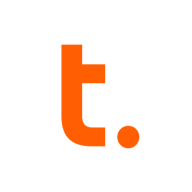

Teradata and Alteryx Designer compete in the data management space, with Teradata offering strong capabilities for large-scale data warehousing and analytics, whereas Alteryx Designer is noted for its user-friendly design. Teradata seems to have the upper hand in handling large data environments effectively, while Alteryx Designer is preferred for its intuitive interface and ease of use.
Features: Teradata is known for its massive parallel processing, workload management, and the ability to handle large volumes of data efficiently. It supports system tuning and transformation for business intelligence. Alteryx Designer is praised for its drag-and-drop functionality, allowing for easy data manipulation and integration, essential for automating analytics tasks. Its ease of use for non-technical users is a notable advantage.
Room for Improvement: Teradata has room to enhance its cloud capabilities, improve user administration, and offer competitive pricing. Users of Alteryx Designer suggest lower costs and enhanced automation features, as well as better management of large datasets. Both platforms could improve integration with other systems.
Ease of Deployment and Customer Service: Teradata is largely on-premises but can be used on private clouds. Its support is mixed in response time. Alteryx Designer supports private and hybrid cloud deployments, and users appreciate its excellent support despite occasional slow response times.
Pricing and ROI: Teradata's pricing is steep but provides significant ROI for large enterprises, making it preferable for large-scale operations. Alteryx Designer also incurs high costs, especially as usage scales, albeit providing good functionality for diverse environments.
There are areas where they need to improve response time and overall competence.
The technical support from Teradata is quite advanced.
Customer support is very good, rated eight out of ten under our essential agreement.
This expansion can occur without incurring downtime or taking systems offline.
Scalability is complex as you need to purchase a license and coordinate with Teradata for additional disk space and CPU.
I find the stability to be almost a ten out of ten.
The workload management and software maturity provide a reliable system.
Unlike SQL and Oracle, which have in-built replication capabilities, we don't have similar functionality with Teradata.
It's cheaper than Palantir, but even Alteryx is too much for small clients.
Initially, it may seem expensive compared to similar cloud databases, however, it offers significant value in performance, stability, and overall output once in use.
Teradata is much more expensive than SQL, which is well-performed and cheaper.
The main valuable aspect is the simplicity of use across all features.
The data mover is valuable over the last two years as it allows us to achieve data replication to our disaster recovery systems.


Teradata is a scalable data analytics platform designed to meet enterprise demands for large-scale data management and processing, focusing on performance, scalability, and security for complex query executions.
As a leading data warehousing solution, Teradata integrates advanced analytics enabling organizations to derive insights from massive datasets. It supports high-volume data workloads with its architecture optimized for analytical queries. Users benefit from its robust scalability, allowing seamless expansion as data grows. Teradata's SQL engine is compatible with a wide range of data types, ensuring flexibility in data analysis. With advanced security measures, it protects sensitive data across various environments, providing peace of mind to users handling critical information.
What are the most important features of Teradata?Teradata is widely used in industries like finance, telecommunications, and healthcare, where data-driven decisions are critical. Companies leverage its robust analytics capabilities to enhance customer experiences, streamline operations, and ensure compliance with regulatory requirements. In these sectors, quick access to data insights can significantly impact competitive advantage.
We monitor all Data Integration reviews to prevent fraudulent reviews and keep review quality high. We do not post reviews by company employees or direct competitors. We validate each review for authenticity via cross-reference with LinkedIn, and personal follow-up with the reviewer when necessary.